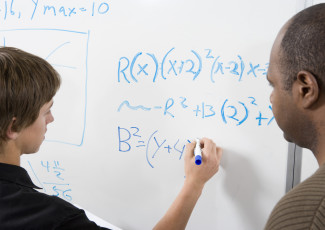Diagnosing College Readiness As Early As Middle School
By Kimberly O'Malley
April 24, 2015
Research points to six factors that can yield better rates of student success.
Ellen DeGeneres dropped out of the University of New Orleans after only one semester. Matt Mullenweg, founder of Automattic and chairman of WordPress (which powers more than 20 percent of the Internet), was not a successful college student and dropped out of the University of Houston. The same is true of Woody Allen: He made such poor grades at New York University that he was dismissed. Few would question this trio’s intelligence, but none of them had much success in college.
It takes more than smarts to be ready for and successful in college. Still, we continue to rely primarily on achievement scores, not only to determine students’ college readiness but also to assess their schools’ performance.
As an example, three of the four indices Texas uses in its accountability system rely almost exclusively on test scores. In the past, it might have made sense to rely heavily on test scores, because they were readily available and are generated under standardized conditions.
Today, however, with the expansion of digital data and technology, schools collect much more information about students. These data extend beyond the narrow domain of academic achievement and can be used to make more holistic determinations about students’ progress toward college readiness and success.
College Readiness Research
Researchers Matt Gaertner and Katie McClarty of Pearson’s Research & Innovation Network combined rich student- and school-level data to evaluate whether more information makes for more accurate college-readiness predictions. With more comprehensive data, could we deliver reliable college-readiness diagnoses earlier in students’ K–12 pathways, when there is more time to course-correct if students are not on track?
Gaertner and McClarty analyzed longitudinal data from more than 11,000 students in the National Education Longitudinal Study (NELS) of 1988. They used 140 middle school variables to create six factors: achievement, behavior, motivation, social engagement, family circumstances and school characteristics. They then used these middle school factors to predict college readiness and college outcomes.
They found some interesting results:
- With respect to college readiness, all six factors were valuable predictors. As we might expect, academic achievement was the strongest predictor (accounting for 17 percent of the variation in college readiness), but motivation (15 percent) and behavior (14 percent) followed closely. Together, motivation and behavior contribute more to college readiness than achievement on its own.
- With respect to college success, these six middle school factors predict college grades (cumulative GPA) and graduation better than the ACT or the SAT. In fact, using the six factors nearly doubles our ability to predict college graduation, compared with using test scores alone. Most notably, these predictions arrive in eighth grade — three years before the SAT or the ACT.
The results of this study will be published this summer in Educational Measurement: Issues and Practice.
We have rich data in schools today. Using a variety of information sources, we can better predict college readiness and college success earlier and in time to intervene and support students who are off track. The data also point to a broader set of intervention options that go beyond improving test scores.
It takes more than smarts to be successful in college — by combining information across multiple factors, we can give students actionable feedback about progress toward their future goals, years earlier than conventional measures.











